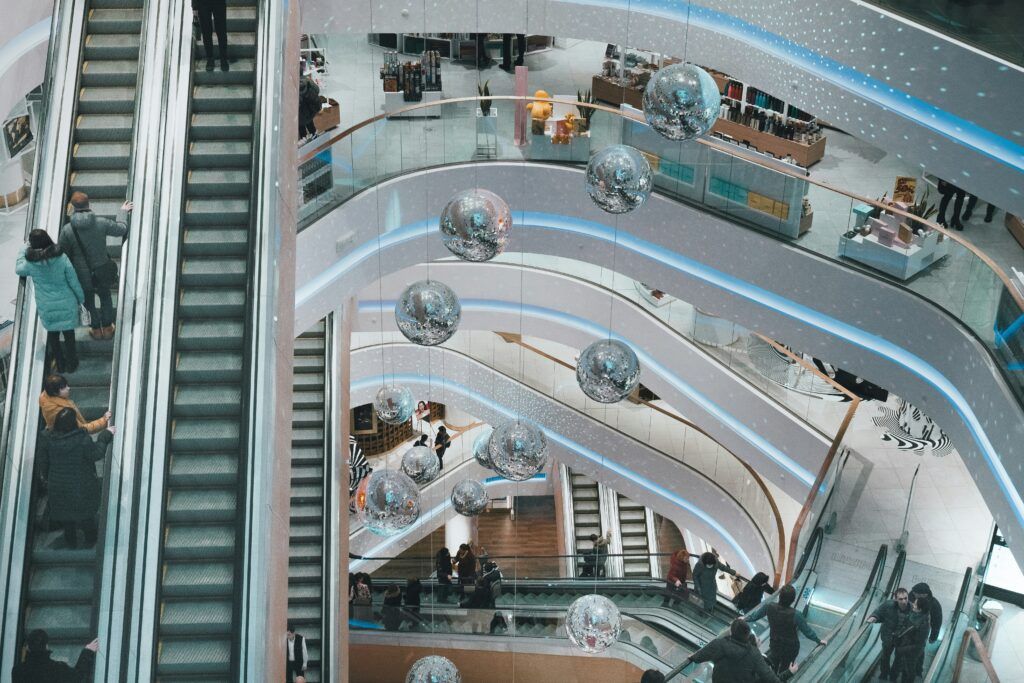As people are ramping back up after the holiday season, those of us who work in retail and retail tech are also gearing up for one of the most exciting events to kick off the year – NRF’s Retail Big Show in January in NYC. On the heels of another exciting (and exhausting) retail holiday season, it’s a perfect time to come together and discuss 2025 retail tech trends: what’s working, what’s not, and what’s next.
The challenge is, the retail experience continues to change at a rapid rate, making it difficult for retailers, technology partners and even consumers to keep pace. Consumer expectations are evolving as they demand more – more personalization, more transparency, more alignment with brand values, more options to shop, and just generally more, more, more. Rising expectations are further compounded by an explosion of new channels and means of engaging consumers – creating data overload and inconsistencies.
Of course, no blog post in 2025 would be complete without acknowledging the 500-pound gorilla in the room: Artificial Intelligence (AI). As we look at the top trends impacting the retail tech space, we are very purposely not including AI as one of these top trends. Because AI is not a retail tech trend – it is the retail tech trend, and it impacts all other trends and priorities we’ll discuss.
Retail Tech Trend #1: AI and Sustainability – The Double-Edged Sword in Retail Operations
Today, it’s hard to do practically anything, personally or professionally, without leaving a carbon footprint. From streaming entertainment, video conferencing, travel, even the food we eat – it all contributes to climate change. Retail and shopping are no different. In fact, the fast fashion industry is one of the worst perpetrators of climate change. Combine that with a growing culture of returns, the supply chain and logistics of in-store and digital shopping, and the rise of apps like Shein and Temu that promote reckless consumerism – the retail space is in quite a pickle when it comes to protecting and preserving the environment.
Consumers are committing to brands that commit to sustainability
Despite this fixation with fast fashion, consumers are putting pressure on brands to reduce their carbon footprints and be transparent about sustainability commitments.
Sustainability isn’t just a nice-to-have, and it’s not just about doing the right thing. Committing to sustainability meets a business imperative to reduce costs, meet ongoing global regulations, and ensure you remain competitive in a consumer market that cares more about brand values than ever.
AI: Is it a net-benefit for sustainability efforts?
As AI continues to permeate the retail space, there are conflicting views on whether the technology will help or hurt sustainability efforts. Reason being: the amount of power required to run AI, and the amount of emissions it produces, is exponential.
But AI can streamline operations and find ways to reduce your company’s impact on the environment. For example, in Europe the rollout of Digital Product Passports (DPPs) introduces more transparency into product data across the entire value chain. And in the supply chain space, there are AI tools that can identify sustainability gaps in your supply chain and logistics organization. These tools additionally offer recommendations for new (more sustainable) suppliers, improved transportation routes, reduced redundancies, and optimized inventory to reduce operational footprints.
The takeaway: Regardless of where or how AI is implemented, in consumer-facing shopping applications or across back-end operations, there must be a focus on ethical implementation that ensures AI outputs do more good than harm.
Retail Tech Trend #2: The Path to AI Success Starts with a Unified Tech Stack
The goal of technology has always been to improve things. Make civilization faster, smarter, stronger, and more streamlined.
But today, the sheer volume of technology options is dizzying. What was once meant to streamline and improve has become a complex system of disparate tools and databases that makes it harder for retail leaders to understand their sales and customer organizations. (That doesn’t even factor in all the security concerns that come with adopting more technology into your stack.) The more vendors and tools, the more potential for vulnerabilities.
Tech stack consolidation lays the groundwork for your AI deployment
In 2025, as retailers look to drive meaningful (and measurable) outcomes from their AI investments, they’ll need to consolidate and modernize their tech stacks.
Most enterprise networks, as they’re built today, don’t have the resources or bandwidth to effectively support AI applications. Why? Because AI applications are very data intensive. To prepare their networks for AI, retailers will need to look for modern approaches that take down silos and unify previously-disparate platforms. This will help you meet AI and customer engagement needs, without sacrificing cybersecurity.
A consolidated tech stack can also better meet evolving customer demands. By helping share data across teams and departments, brands can better personalize experiences and ensure expectations are met. For example, unified data programs give one view of the customer across various tools and data sets to better understand them holistically. AI further helps overcome the abundance of disruptions and supply shortages the retail space has experienced over the last five years.
Retail Tech Trend #3: Building Trust in a Fragmented Retail Landscape
Authenticity has never been more critical in the retail sector. Customers want to buy from brands they can trust. This can be challenging as retail tech trends like the rise of dupes, fake user reviews, cheaply made products, and inauthentic influencer culture compound trust issues.
Related Read: Why Retail Disruption Is Strengthening the Brand-Retailer Bond
Whether shopping online or in store, customers want to know that the product they are buying is what they were promised. Plus, the explosion of new retail channels and third-party marketplaces makes it challenging for brands to control how their product is portrayed when it’s sold.
Why and how to deliver the same great customer experience across channels
AI can help improve the retail and product experience, even in third-party marketplaces. Sophisticated product tech can find wherever a brand’s product lives online, and ensure the CX is consistent across all channels – from product specs, photos, and even customer reviews, to pricing and availability. This way, regardless of where a customer engages your brand, they always have an authentic and positive experience – which builds trust over time.
While the retail industry has seen its fair share of disruption over the past 12 months, the north star of retail has always been the same – it’s all about the experience. AI may be paving a new path in a lot of ways, but experience still rules all. So every AI decision or application needs to map back to supporting a better retail experience, whether that’s in the B2B or B2C space.
Speak with PAN About Your Retail Tech Aspirations
At NRF 2025, our team is excited to connect with attendees from every sector of retail, as we come together to discuss where the challenges and opportunities lie, the tech that will get us there, and how we approach this all ethically in 2025.
You can catch the PAN team at NRF, and if you’re looking to connect in a more intimate setting with the PAN team and the Retail TouchPoints editorial team, request an invite to our exclusive event at KYMA, here: PAN & Retail TouchPoints at NRF: Exclusive Event.
Interested in hearing more about our work? Check out a couple of our case studies: Activating social media for candidate acquisition and Harnessing timely consumer insights to drive thought leadership.


